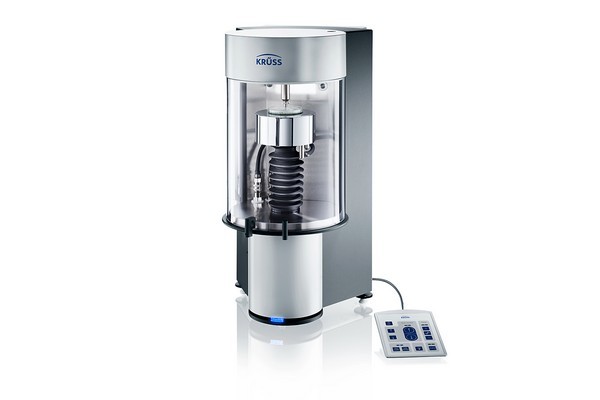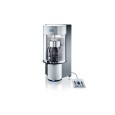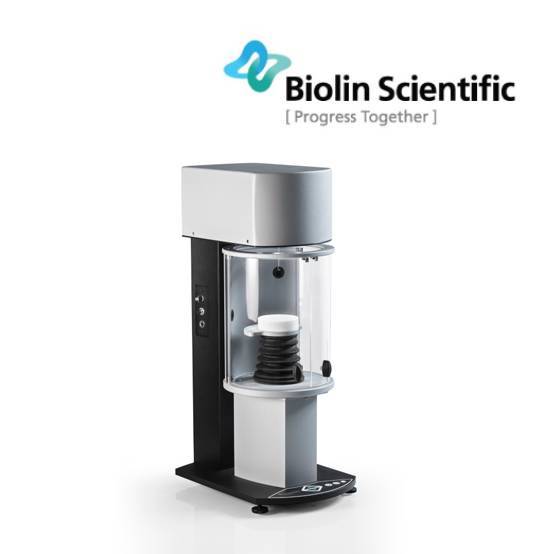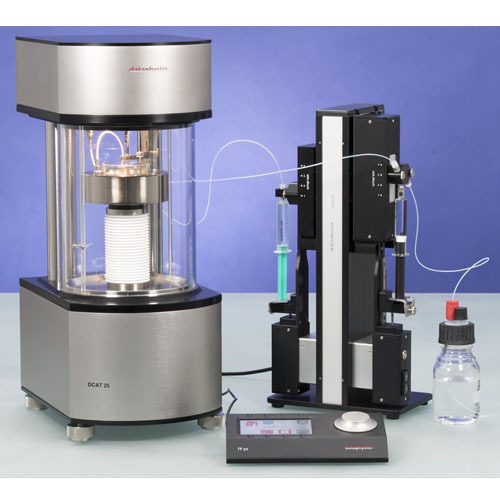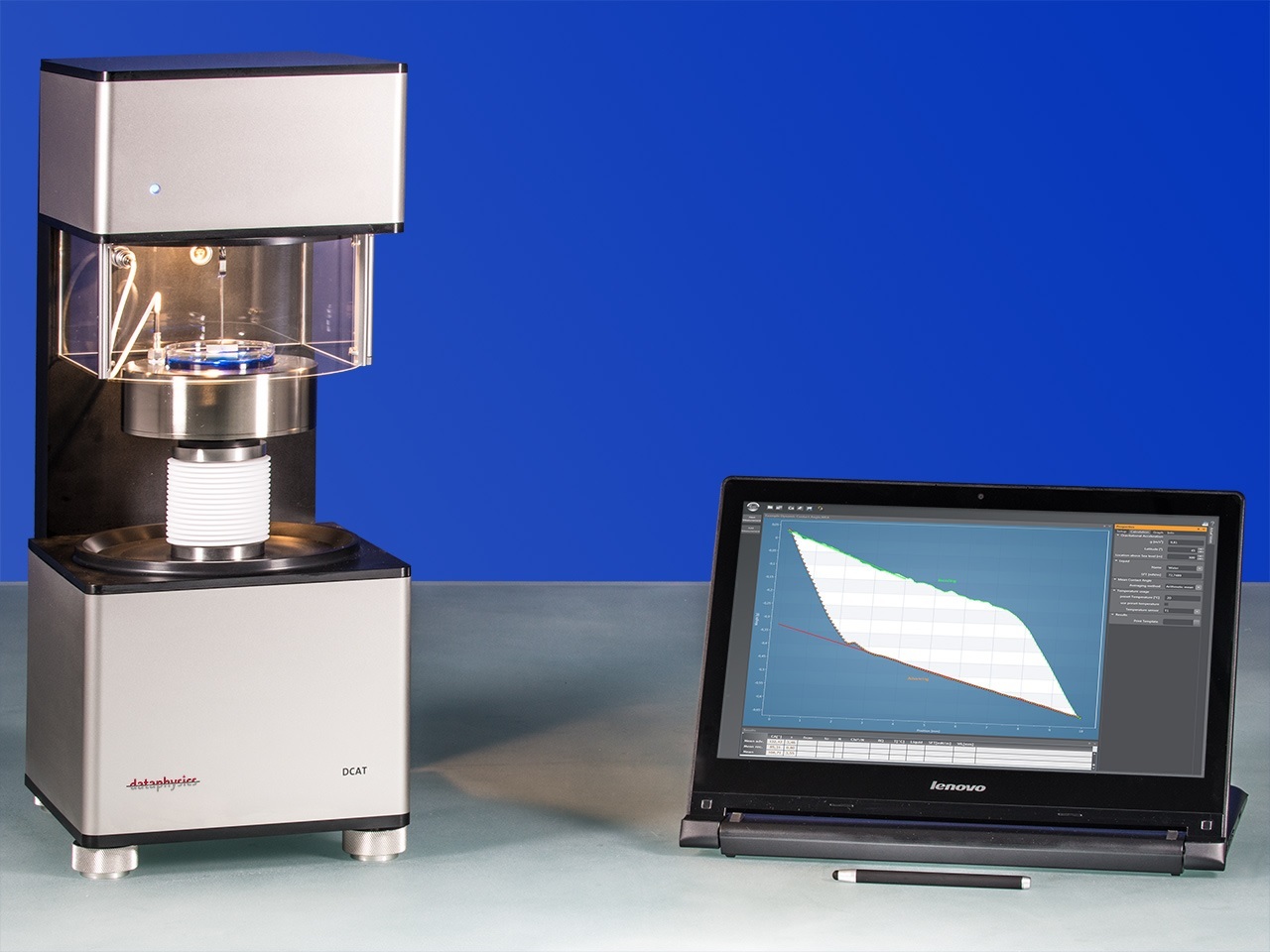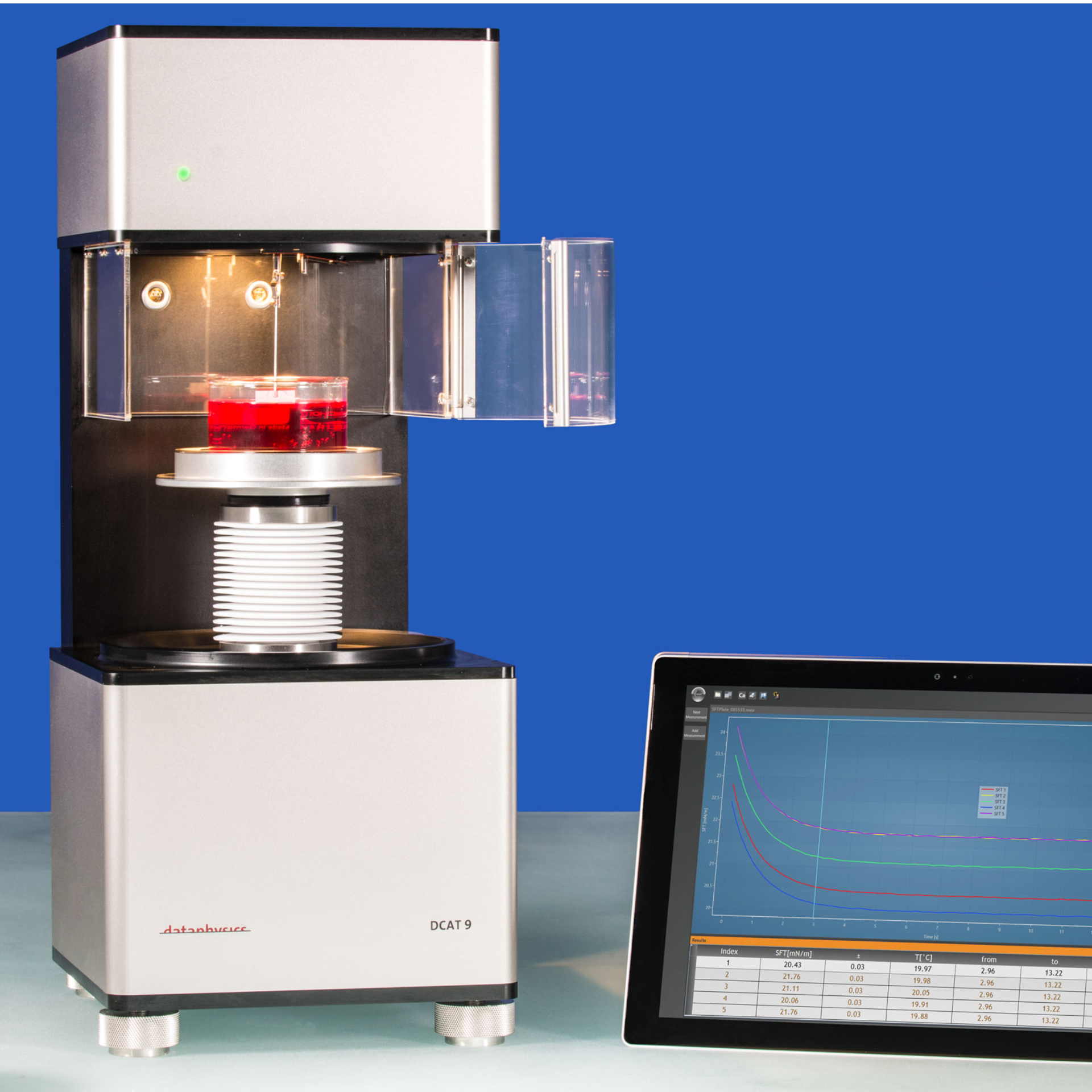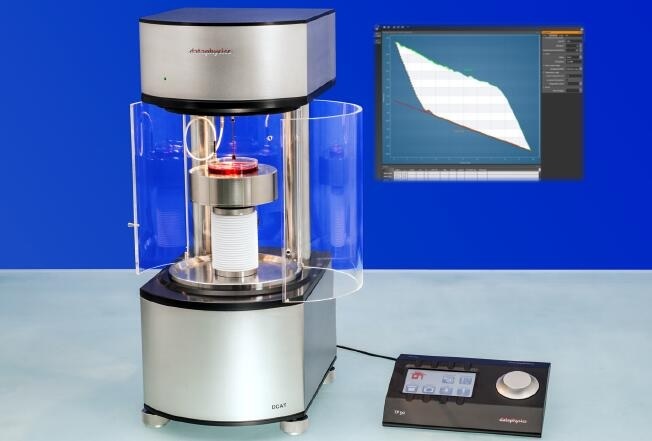方案详情
文
平板印刷中润版液主要防止非图像区域受到油墨润湿。由于环境和安全意识的提高,传统水中的异丙醇逐渐被含有表面活性剂的低挥发有机化合物代替。
方案详情

Application Report Offset printing, fountain solution, surfactant, dynamic surface tension, wetting Fountain Solutions for Offset Printing Fountain or dampening solutions in offset printing technology are used to protect non-imaging areas of the printingplate from wetting with ink. Non-imaging areas of the printing plate are formed by aluminum substrates mostly surfacetreated to enhance their wettability. Usual fountain solutions consist of water and isopropanol (IPA). In the past 10 to 30%of this solution was IPA. Nowadays due to environmental and safety awareness IPA is more and more substituted by lessvolatile soluble organic compounds (nevertheless some of them hazardous) like glycols but always in combination withsurfactants or surfactant-like substances. In a solution consisting of 30% IPA the surface tension is about 30mN/m at nearly every timescale even at short times.This is because IPA has got a high concentration, it is completely miscible with water and a small molecule so it candiffuse very rapidly to the freshly built surface. Glycols and surfactants have molecular weights and sizes several timeslarger than IPA, but the major advantage of surfactants is the extreme small amount of substance needed to lower surfacetension effectively. In equilibrium just ppb to ppm amounts are needed to achieve surface tensions in water of around30mN/m. But due to the molecular weight and size they diffuse and absorb much slower to and at the freshly builtsurface. In offset printing technology no equilibrium conditions for the liquids are given. Surfaces are built and destroyed withinmilliseconds. So when trying to substitute IPA by other components to lower the surface tension of water for this purposeeffectively, one should not take static or equilibrium surface tension into account, but dynamics. The difference between static and dynamic methods is the measurement procedure itself. At a static measurement theexpansion of surface takes place once in the beginning of the measurement. The surface is somehow pre-equilibratedsince it has been poured into the beaker and after a not defined period of time the measurement took place.So a staticmeasurement can give information about the equilibrium surface tension and the decrease of surface tension with timebetween start of the measurement and the end (which is the equilibrium if the time was long enough). In a dynamic experiment the enlargement of surface is part of each measurement and takes place in a defined way (timeand size). So the result of a dynamic measurement is always at least a pair of data: surface age and surface tension (whichbelongs to this specific surface age). Usually the surface age is varied during a series of measurements, so a plot ofsurface tension vs. surface age is the result. KRUSS In the following example two samples of fountain solution concentrate "good" and "bad" have been tested towards theirability to lower surface tension of water when diluted to give 2% and 3% solutions of concentrate in water. (Theconcentration of surface active compounds in the concentrates usually is about 10%, so there is about 0.2-0.3% surfaceactive matter in the solution used in practice). Here no equilibrium measurements were performed, since for the printingprocess this data would not be valuable. For characterization of the dynamic properties of these samples the KRUSSmaximum bubble pressure tensiometer BP2 was used. Diagram 1 shows the dynamic surface tension of 2wt-% and diagram 2 3wt-% solutions in water. Diagram 1: dynamic surface tension versus time of samples "good" and "bad" (2wt-%in water) zcocu5 Diagram 2: dynamic surface tension versus time of samples "good" and "bad" (3wt-% in water) As can be seen in the diagrams both samples show strong dependence of surface tension from surface age.Sample "bad"lowers surface tension only effectively at high surface ages. The slope of sample "good" is smaller (more negative) so it isable to lower surface tension more effectively within smaller time frames. This effect is even strengthened whenincreasing the concentration to 3wt-% (see diagram 2). RUSS GmbH|Borsteler Chaussee Hamburg| Germany | www.kruss.de
确定
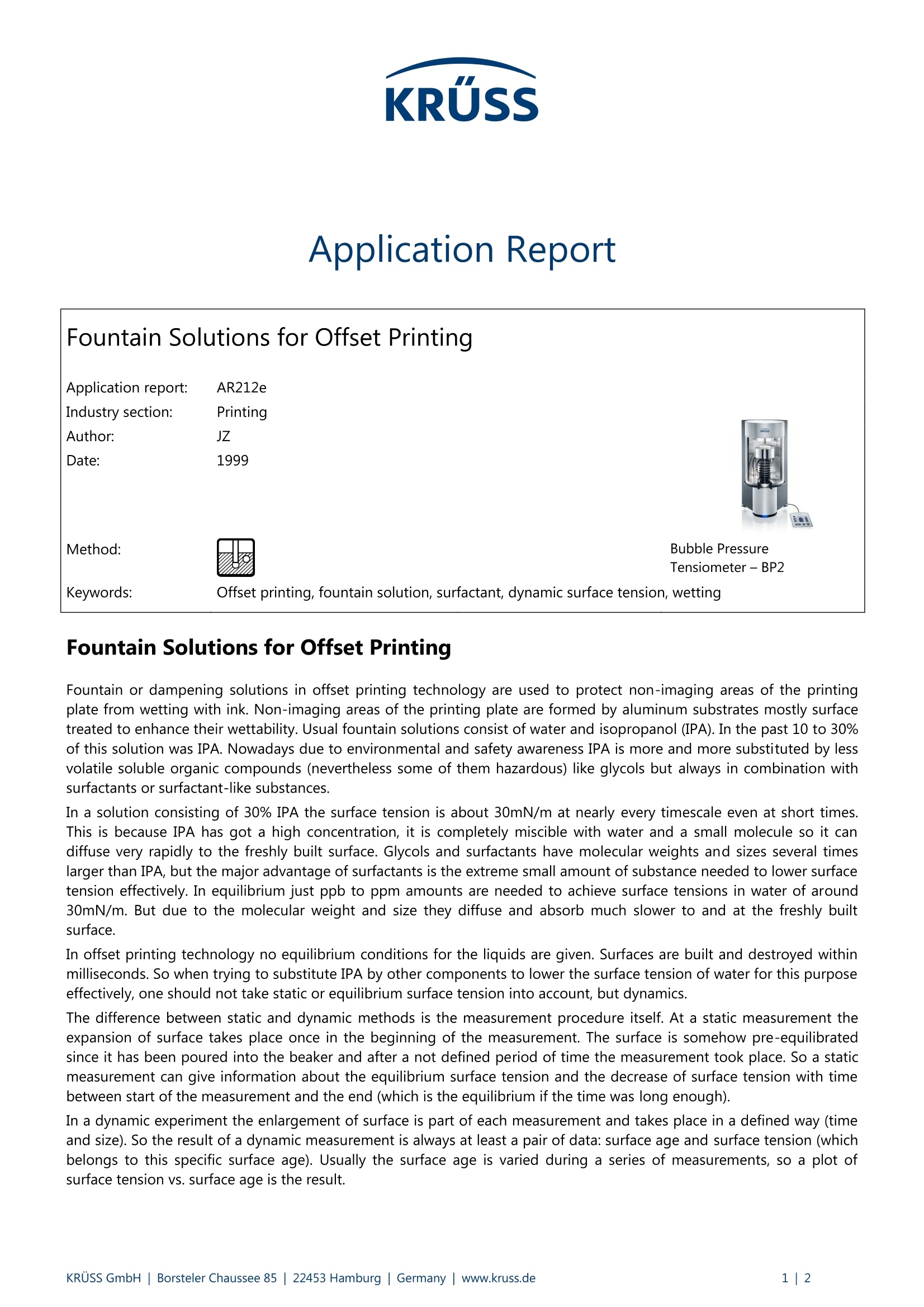
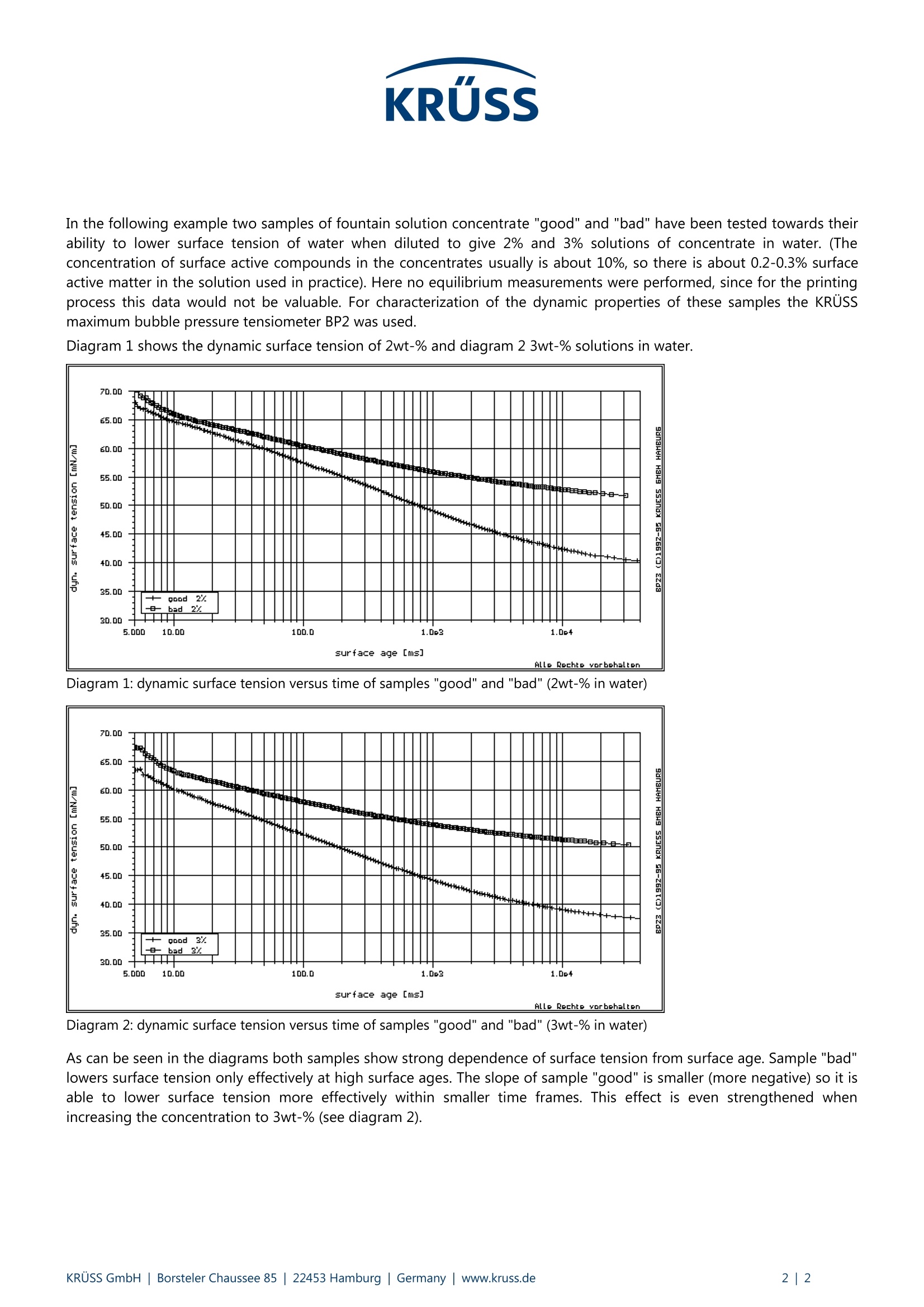
还剩1页未读,是否继续阅读?
克吕士科学仪器(上海)有限公司为您提供《润版液中动态表面张力检测方案(表面张力仪)》,该方案主要用于印刷中动态表面张力检测,参考标准--,《润版液中动态表面张力检测方案(表面张力仪)》用到的仪器有KRUSS BP100型动态表面张力仪
推荐专场
相关方案
更多

